Echoes Of Laurel Canyon - Seventeen
Before We Go Too Much Further, A Little Background On The Chicago Outfit In Hollywood
Before we delve into the numerous stories of Hollywood in the 1950s and 1960s involving Sidney Korshak, a lawyer for the Chicago Outfit, a brief history is in order. The Chicago Outfit’s Al Capone and his right-hand man, Frank Nitti, went to prison for income tax evasion in 1931, near the end of Prohibition. However, Capone was sentenced to eleven years, while Nitti received only eighteen months. This shorter sentence for Frank Nitti, compared to Capone's, allowed him to take over the Chicago Outfit's crime operations.
Frank Nitti took over for Capone after he was released from prison in 1932, just in time to witness the end of Prohibition in America and the decline of the rich flow of bootleg cash for the Chicago Outfit. Nitti would install a white slavery pimp named Willie Bioff as his bagman to shakedown Hollywood studios.
Overall Summary
The article traces the evolution of the Chicago Outfit’s Hollywood extortion racket from Frank Nitti and Willie Bioff’s 1930s shakedown scheme through the transformation of mob influence under Sidney Korshak, who shifted tactics from violence to sexual blackmail.
Frank Nitti didn’t run the Chicago Mob for Al Capone for very long after he got out of prison.
The Outfit extorted Hollywood studios using threats of union strikes, but Korshak eventually dismantled this scheme and replaced it with compromise operations through intelligence partnerships and studio infiltration.
As figures like Johnny Roselli, Sam Giancana, and Paul Ricca replaced the Capone-era gangsters, Korshak built alliances with the CIA (notably through Henry Kissinger) and dominated post-war Hollywood.
These efforts were protected and obfuscated through strategic leaks, public showdowns like the Kefauver Hearings, and psychological operations such as “hair pulling” or “wing dragging” to mask conspiratorial ties.
🕵️ People :
Sidney Korshak
A Chicago Outfit lawyer who became the behind-the-scenes powerbroker in Hollywood, known for his control over unions, studios, and political figures.
Korshak dismantled the Nitti-Bioff extortion racket by “dropping the dime” on his own mob associates, then replaced their brute-force tactics with sexual compromise operations involving actresses and showgirls.
He cultivated powerful partnerships with CIA operatives like Robert Maheu and built covert influence campaigns alongside Henry Kissinger, manipulating media and politics.
Korshak’s manipulation of hearings, sexpionage with showgirls, and rumored role in the Binion-Ruby transition in Dallas reflect his long-standing role as the Outfit’s strategic architect and hidden force in mid-century America.
Frank Nitti
Al Capone’s successor in the Chicago Outfit who led the Hollywood extortion racket through threats of union strikes.
Nitti used mobster Willie Bioff as a bagman to extract massive payments from Hollywood studios in exchange for labor peace.
After a failed 1933 assassination attempt by Sergeant Harry Lang, Nitti survived to preside over a decade of "payola" before allegedly committing suicide in 1943 under suspicious circumstances.
His death marked the end of the Capone-era tactics and opened the door for Korshak to shift the Outfit’s strategies toward infiltration and compromise.
Willie Bioff
A former pimp turned enforcer for Frank Nitti, Bioff led the mob’s extortion campaign in Hollywood during the 1930s and early '40s.
He eventually turned state’s witness in 1943, testifying against the Chicago Seven and exposing the inner workings of the racket.
Bioff entered witness protection but was later assassinated in Phoenix in 1955, likely as revenge for his betrayal.
Korshak is said to have encouraged Bioff to confess, using the fallout to eliminate Nitti’s loyalists and consolidate power.
Johnny Roselli
A charismatic bookmaker and mobster in Hollywood who maintained friendly relations with studio executives and actors.
Roselli played “good cop” to Bioff’s “bad cop,” softening the extortion scheme's image with Hollywood charm.
Later released from prison, Roselli worked with the CIA (notably in the Castro assassination plots) under Korshak’s guidance.
His legacy symbolizes the Outfit’s pivot from domestic crime to intelligence-linked covert operations.
Paul “The Waiter” Ricca
A high-ranking Chicago mobster aligned with Korshak who survived the Bioff fallout and took part in reconstituting Outfit operations post-Nitti.
Ricca was instrumental in reestablishing control in Hollywood and formed key alliances with rising stars like Sam Giancana.
He was believed to have protected Outfit secrets and financial records, possibly including Al Capone’s rumored $100 million slush fund.
Ricca’s low-profile leadership helped the Outfit adapt to new political and intelligence realities.
Sam Giancana
A younger mobster who rose to prominence after the fall of Nitti and Bioff, eventually leading the Outfit and working closely with Roselli and the CIA.
Giancana was connected to the Kennedy family and possibly targeted by Bioff’s testimony, leading to his early imprisonment.
His later involvement in covert CIA operations illustrates how the Outfit’s reach extended well beyond traditional organized crime.
Korshak’s alliance with Giancana represented a new generation of mob leadership aligned with national intelligence strategies.
George S. Brown
A corrupt Hollywood union boss involved in the Nitti-Bioff extortion scheme, who helped facilitate labor threats used for shakedowns.
Brown’s actions helped validate the Teamsters’ and IATSE’s power as tools for mob leverage against studios.
He faded from prominence after the scandal, replaced by union figures like Ronald Reagan under Korshak’s influence.
Brown represents the “union muscle” phase of mob control over Hollywood labor.
Harry Lang
A Chicago Police sergeant who attempted to assassinate Frank Nitti in 1933 but failed, inadvertently extending Nitti’s reign.
Lang’s failed attempt is portrayed as a pivotal moment in mob history, allowing the Outfit to embed itself deeper in Hollywood.
He is said to have been paid for the hit, which inspired fictional portrayals like the Sean Connery character in The Untouchables.
Lang's role illustrates early law enforcement attempts to stem mob influence—before deeper intelligence entanglements took over.
Henry Kissinger
A U.S. Army intelligence officer who later became National Security Advisor and Secretary of State, allegedly collaborated with Korshak.
The article suggests that Kissinger was not a victim of compromise, but a co-architect of Hollywood blackmail and CIA-linked operations.
Kissinger and Korshak allegedly shared the same lover, actress Jill St. John, and collaborated to influence studio executives through media campaigns and compromise.
His public image as a “ladies’ man” was carefully cultivated by Korshak to distract from their true covert collaboration.
Ronald Reagan
Reagan rose to union leadership in Hollywood under Korshak’s protection and would eventually become U.S. President.
His placement in the Screen Actors Guild helped the Outfit weaken communist influence in Hollywood and control labor relations.
Reagan’s early support for anti-communist purges helped Hollywood studios regain control from mob-manipulated unions.
Korshak’s grooming of Reagan marks the transition from brute force to political compromise and manipulation.
Robert Maheu
A CIA operative and former FBI agent who worked closely with Korshak in covert operations, especially in Las Vegas and Hollywood.
Maheu was involved in the CIA’s anti-Castro plots and helped launder mob influence through intelligence channels.
He represented the convergence of organized crime, corporate espionage, and Cold War covert strategy.
Maheu’s partnership with Korshak made them central players in 1950s–1970s black ops.
Estes Kefauver
A U.S. Senator who led the 1950s Kefauver Hearings investigating organized crime, which brought the Chicago Outfit into the public spotlight.
Korshak allegedly compromised Kefauver using a Chicago showgirl to avoid deeper scrutiny during the hearings.
Though the hearings introduced America to mob figures like Frank Costello and Virginia Hill, they failed to expose Korshak’s central role.
Kefauver’s televised spectacle gave mobsters national fame but cleared the way for a new generation of protected Outfit operatives.
Virginia Hill
The girlfriend of murdered mobster Bugsy Siegel, who gained national attention during the Kefauver Hearings.
Her testimony highlighted the intimate and volatile relationships between mobsters and Hollywood socialites.
Hill's dramatic public persona helped sensationalize organized crime for American audiences.
Her presence during the hearings underlined the mob’s entanglement with celebrity and glamour.
Jill St. John
A Hollywood actress romantically linked to both Henry Kissinger and Sidney Korshak, representing the intersection of glamour and covert compromise.
She became a symbolic tool in the sexpionage strategies used to control political and entertainment elites.
Her relationships helped mask the deep connections between state power and criminal networks.
Jill St. John embodies how public image was manipulated to conceal intelligence-mob operations.
Al Capone
Founding boss of the Chicago Outfit, whose imprisonment in 1931 led to Frank Nitti taking control.
Capone’s death in 1947 marked the end of the old Sicilian model, clearing the way for Korshak’s new regime.
Rumors suggest that Capone had hidden away more than $100 million, possibly funneled to a CIA slush fund by Ricca and Roselli.
His legendary status persists, but the article frames Capone as a stepping stone to even more powerful covert alliances.
Benny Binion
A powerful Dallas-based gambling figure forced to relocate to Las Vegas due to the political impact of the Kefauver Hearings.
Binion’s ouster made way for lesser figures like Jack Ruby, creating space for Chicago Outfit expansion.
His exile shows how hearings were used not to destroy organized crime but to realign it under new leadership.
Binion represents the transition from regional crime lords to consolidated, intelligence-backed syndicates.
Jack Ruby
A small-time criminal in Dallas who replaced Benny Binion and would later assassinate Lee Harvey Oswald.
The Outfit facilitated Ruby’s rise and possibly Korshak as part of their plan to take over gambling hubs.
His role in the JFK assassination made him infamous, but his ties to deeper networks remain obscured.
Ruby illustrates the pattern of installing pliable intermediaries to serve broader covert agendas.
🏛️ Organizations:
Chicago Outfit
A major organized crime syndicate that evolved from bootlegging under Capone to extortion, union control, and covert CIA operations under Korshak.
The Outfit’s tactics shifted from violent enforcement under Nitti to sexual compromise and blackmail under Korshak’s direction.
The organization’s deep infiltration of Hollywood shaped American media and politics during the mid-20th century.
It used strategic cooperation with intelligence agencies to retain power while evading law enforcement.
House Un-American Activities Committee (HUAC)
A U.S. congressional committee that investigated communist influence, particularly in Hollywood, helped Korshak break union control.
HUAC’s framing of unionists as communists allowed the Outfit to regain leverage over the film industry.
The committee was a powerful tool for eliminating leftist resistance to mob control.
HUAC’s impact helped reposition Hollywood under the control of political and criminal powerbrokers.
CIA
The Central Intelligence Agency is portrayed as a willing collaborator in the Outfit’s postwar transition from extortion to covert geopolitical influence.
Through partners like Robert Maheu, the CIA merged criminal operations with Cold War objectives in Latin America and beyond.
Korshak’s alliance with the CIA allowed for the global expansion of compromise tactics developed in Hollywood.
The CIA’s cooperation provided protection and resources to support the Outfit’s broader objectives.
Kefauver Hearings (Senate Rackets Committee)
A televised investigation into organized crime that exposed some mob figures while protecting others like Sidney Korshak.
The hearings were used strategically to clear away old leadership and elevate new, more discreet collaborators.
The Committee's spectacle helped shape public opinion on organized crime without disrupting the real power structure.
Korshak’s manipulation of the hearings represents one of the most effective cover operations in mob history.
Introduction
Chicago Outfit boss Frank Nitti had to come up with a new source of revenue quickly, and he decided to leverage the Chicago Mob’s union connections to protect against union shutdowns. Hollywood and the Hollywood studios were the first stop for Frank Nitti and his mercenary bagman, Willie Bioff. Bioff’s demands of Hollywood moguls would start in 1936 with $50,000 extortions from the major studios like MGM and Fox, and $25,000 from the minor studios like Columbia and RKO.
Together with a few other conspirators, Frank Nitti and Willie Bioff popularized a new word for protection rackets: “payola” in Hollywood. By calling for work stoppages on Hollywood sets through the Teamsters or the IATSE stage workers union, Nitti and Bioff could cripple the movie production of the major studios. In contrast, the studios still had to pay the top stars their hefty compensation packages.
The $50,000 Hollywood studio protection racket run by Nitti and Bioff had over a ten-year run before Korshak threw a wrench into the extortion machine gears. Painting the union organizers as Communists would be an essential part of breaking the union stranglehold on the studios, and infiltrating the unions with studio men like Ronald Reagan would be the other key piece in keeping the unions in check.
The Hollywood Extortion Scheme forms a pivotal moment in Chicago Outfit history as many mobsters that will later become famous, like Sam Giancana and Johnny Roselli, go to prison for this scheme. Roselli was a well-known bookmaker in Hollywood and a friend to all the stars. Roselli would retain his “good cop” relationship with studio heads while Willie Bioff played the “bad cop” for the Chicago Outfit. Korshak knew the value of Roselli's goodwill and that Roselli would survive the purge coming for Frank Nitti and Willie Bioff.
Johnny Roselli was one of the mobsters who would be made famous (and mysteriously released from prison, I believe, from Korshak prosecutor arrangements) for the Hollywood Extortion. However, Korshak had plans for Roselli to form more prominent partnerships after World War II to do the dirty work of the newly formed Central Intelligence Agency rather than just running a $50K per studio extortion racket.
However, until 1943, Hollywood “payola” was a lucrative scheme for the Chicago Outfit. Payola or protection was a much less expensive alternative for many studio productions. Nitti and Bioff certainly had a decade of decadence in Hollywood, but the backlash against this payola would write history with the House UnAmerican Activities Committee (HUAC) where these shakedown activities would be labeled “Communist”.
George S. Brown was a corrupt Hollywood union boss in this Nitti and Bioff Hollywood Payola scheme, along with another mobster named Paul “The Waiter” Ricca. Ricca was aligned with Chicago Outfit lawyer Sidney Korshak, who was still biding his time to move to Hollywood. Paul “The Waiter” Ricca would be another Chicago Outfit mobster saved by Korshak in the post-Nitti era. Willie Bioff turned informant on other Chicago Outfit brethren in 1943 and may have been the mobster that put Kennedy-connected mobster Sam Giancanna in jail in 1939.
Korshak would make alliances with some of these ousted Chicago Outfit mobsters, like Sam Giancana after they exited prison in 1943. Meanwhile, from 1933 to 1943, Frank Nitti was the key Sicilian godfather who shook down the Hollywood studio bosses, and Willie Bioff was his shakedown artist in Hollywood.
Al Capone’s second in command, Frank Nitti, and Willie Bioff of the Chicago Outfit shakedown the Hollywood studios from 1933 to 1943 until Korshak and J. Edgar Hoover “dropped the dime” on them.
Korshak cleverly used the revenge motive to remove Nitti and Bioff in 1943 at the height of Hollywood World War II propaganda films.
https://www.filmnoirfoundation.org/noircitymag/The-Chicago-Way.pdf
I will throw in a spoiler alert that Chicago Outfit lawyer and fixer Stanley Korshak is going to “drop the dime” on both Nitti and Bioff through mobster Waiter Ricca, Sam Ginacana, and Johnny Roselli to cut the last of the Sicilian Capone Godfather ties to Hollywood Payola. (Another spoiler alert - Korshak was the key source for the original arrest of Capone and Nitti.)
An Untouchable assassination in 1933 on Frank Nitti by a Chicago Police Sergeant named Lang fails, setting up a decade of dealing with the Sicilians in Hollywood for Payola schemes (loosely based on the Sean Connery character in the film The Untouchables). In real life, the Chicago policeman who was paid for the Nitti assassination was named Harry Lang.
Untouchables’ assassination of Frank Nitti fails after Nitti is shot three times in 1933, setting up a decade of paying Hollywood Payola by the movie studios.
Don’t worry. Frank Nitti is going to get what is coming to him in 1943. Nitti supposedly committed suicide, missing himself with his first shot that blew his hat off. Nitti also supposedly wounded himself in the chin on his second shot. Finally, Nitti hit himself with a third shot, conveniently covered by the noise and screen of a train. (Chicago Outfit lawyer Sidney Korshak is the possible inspiration for the lawyer in the musical Chicago and the musical hit, “He Had It Comin’,” from the movie.
https://en.wikipedia.org/wiki/Frank_Nitti
There was an odd lack of blood in the death pose of Chicago Outfit boss Frank Nitti, leading some to speculate that he was shot in the back. Korshak had counseled Bioff to confess as the studio bagman in the Hollywood payola scheme, which ended up taking down the “Chicago Seven” in the Chicago Outfit. Nitti supposedly committed suicide a few hours after the indictment.
Nitti’s accountant, Alex Greenberg, had invested millions of Nitti’s Hollywood Payola takings, only returning $100,000 to Nitti’s widow.
Willie Bioff singing like a canary put the Chicago Seven in jail for decade-long sentences.
After Al Capone died in 1947, Johnny Roselli and Paul Ricca were released. The author believes Roselli and Ricca identified where Al Capone secreted more than $100 million to Sidney Korshak for a CIA slush fund for covert action for the next decade.
Whether Capone’s secret stash was found or not, the stage was now set for Korshak to reset the chess pieces of the Mob in America with the help of a young US Army Intelligence officer named Henry Kissinger and a future President named Ronald Reagan.
Richard Gere stars in Chicago, a story about an Outfit connected lawyer inspired by Sidney Korshak, and sings, “He Had It Comin’.”
And don’t worry; Willie Bioff was muscled out of the Hollywood Payola scheme after Frank Nitti died in 1943, too, as he became the Hollywood Squealer. Willie Bioff went into witness protection after turning State’s evidence in the Hollywood Payola shakedowns in 1943, but he also ended up dead with his house exploding in Phoenix, Arizona, in 1955.
Chicago Outfit lawyer Sidney Korshak “drops a dime” on Willie Bioff.
Sidney Korshak’s use of wayward girls turned prostitute informers is parodied in the musical Chicago with Rene Zellwigger’s character. Sidney Korshak avoided being called out in the 1950 Kefauver hearings by compromising Kefauver with a Chicago showgirl before the hearing on the Chicago Outfit.
The important takeaway is that Handsome Johnny Rosselli, Sam Giancana, and Paul “The Waiter” Ricca will be Sidney Korshak’s Italian mobster replacements for the Capone “Sicilians.” Sidney Korshak used compromise tactics with Hollywood showgirls rather than mob murders to control the major Hollywood studios after World War II. The post-World War Two shakeup was coming in the mob world with the most spectacular television event up to that time in history, with 30 million viewers—The Kefauver Hearings.
Korshak would use leaks to the Senate Kefauver Hearings to clear away the Old Guard in New york and Chicago, and bring in a whole new set of Chicago Outfit mobsters under his control with the Kefauver Hearings.
As the Kefauver Mob Hearings toured the country, they gained prominence until the blockbuster, nationally televised hearing in New York, featuring Frank Costello of the Genovese crime family and the girlfriend of murdered mobster Bugsy Siegel.
Meyer Lansky, Frank Costello, and slain mobster Bugsy Siegel’s girlfriend, Virginia Hill, became household names with the gigantic, 30 million viewer audience in total and twenty million viewers for just the New York hearings.
Senator Estes Kefauver called Korshak into the Kefauver Rackets Committee investigation for the Chicago Kefauver Hearings, but Korshak arranged for a Chicago showgirl to entertain Kefauver before the hearings began.
Estes Kefauver’s Mafia Rackets Committee ran into a problem when he got to Chicago and Sydney Korshak - Chicago showgirl compromise.
The Hollywood Payola scheme won’t end when Korshak takes control of Hollywood after World War II; but control slowly transfers to Korshak and his Mossad connections over time. Sidney Korshak will do that with the help of a new union President named Ronald Reagan, but that’s for the next episode of Echoes of Laurel Canyon.
Korshak Sexpionage Notes -
Much has been written about Sidney Korshak’s “Sexispionage” since the famous Kefauver Compromise of 1950, saving the Chicago Outfit from deep scrutiny. This author believes Henry Kissinger was a victim of Korshak compromise, but in actual fact, Korshak and Kissinger worked closely together to target studio heads and major stars strategically over decades.
I agree with this author that Kissinger is tied closely to Korshak. Still, I'm afraid I have to disagree with this author about the various compromise operations that Sidney Korshak ran. I'm afraid I have to disagree that Kissinger was a target of sexpionage. I contend instead that Kissinger was a co-planner of the Korshak operations.
However, these “controlled leaks” or “limited hangouts” are still helpful for collecting metadata on the Kissinger Compromise operations with Korshak. Kissinger and Korshak adroitly controlled all the major studios through strategic compromise.
https://aadl.org/node/201935
In the intelligence game, “dragging a broken wing” creates distance between co-conspirators by creating a scenario where the co-conspirators are at odds. I coined the term “hair pulling” for this situation because I felt the phrase “hair pulling” was more descriptive.
But in any case, the author here takes the “Korshak goes after Kissinger” bait, which I think is used to protect the Kissinger-Korshak covert partnership.
Again, Korshak is the hidden source of this article. It was explicitly leaked to create distance between Kissinger and Korshak, making Kissinger the victim rather than the perpetrator.
Like CIA Operative Robert Maheu, as with all leaks intended to make perpetrators look like victims, the intelligence operatives always give away their co-conspirators in compromise operations.
Like all “wing dragging” or “hair pulling” exercises, the truth eventually emerges about the partnership. Kissinger and Korshak even shared the same lover, Jill St. John. Korshak seemed to recruit the Hollywood hopeful starlets for missions in Hollywood, sleeping with the starlets in the process.
Then Korshak would emblazon the tabloids with the sexual exploits of Henry Kissinger with campaigns like “Power is the Ultimate Aphrodisiac” power persona.
https://www.hollywoodreporter.com/news/general-news/henry-kissinger-hollywood-love-affairs-power-ultimate-aphrodisiac-1235704158/
Korshak cultivated the image of Henry Kissinger as the ultimate “Starf——er.” We get the impression from Kissinger's very public sex bragging that Korshak enjoyed the same Hollywood actresses as Kissinger behind the scenes as well.
https://archive.ph/w06vz
https://www.amazon.com/Supermob-Korshak-Criminal-Associates-Americas/dp/1582343896
We will learn more about CIA operative Mahue and Chicago Outfit lawyer Korshak's machinations in future substacks.
And yes, Sidney Korshak was in the middle of forcing Dallas mega-casino man Benny Binion into leaving Dallas to make room for a Chicago Outfit tough named Jack Ruby as Binion headed to Las Vegas to run casinos there.
Again, the Kefauver Hearings were used to move the gambling meccas in America from Dallas and New Orleans, moving big time operators like Benny Binion to Las Vegas, replacing them with small fry informants and bunglers like Jack Ruby.
Binion was exposed in the New Orleans hearing of the Kefauver Hearings in January of 1951.
Meyer Lansky and Sidney Korshak’s shared intimate knowledge of illegal gambling and drug trafficking operations in the United States which made the choice of cities for the Kefauver Hearings an easy agenda to write. The overall aim was to force gambling to Cuba and Las Vegas under the control of Lansky and Korshak’s dominion.
Korshak and Kissinger’s fingerprints seem to be everywhere in history.





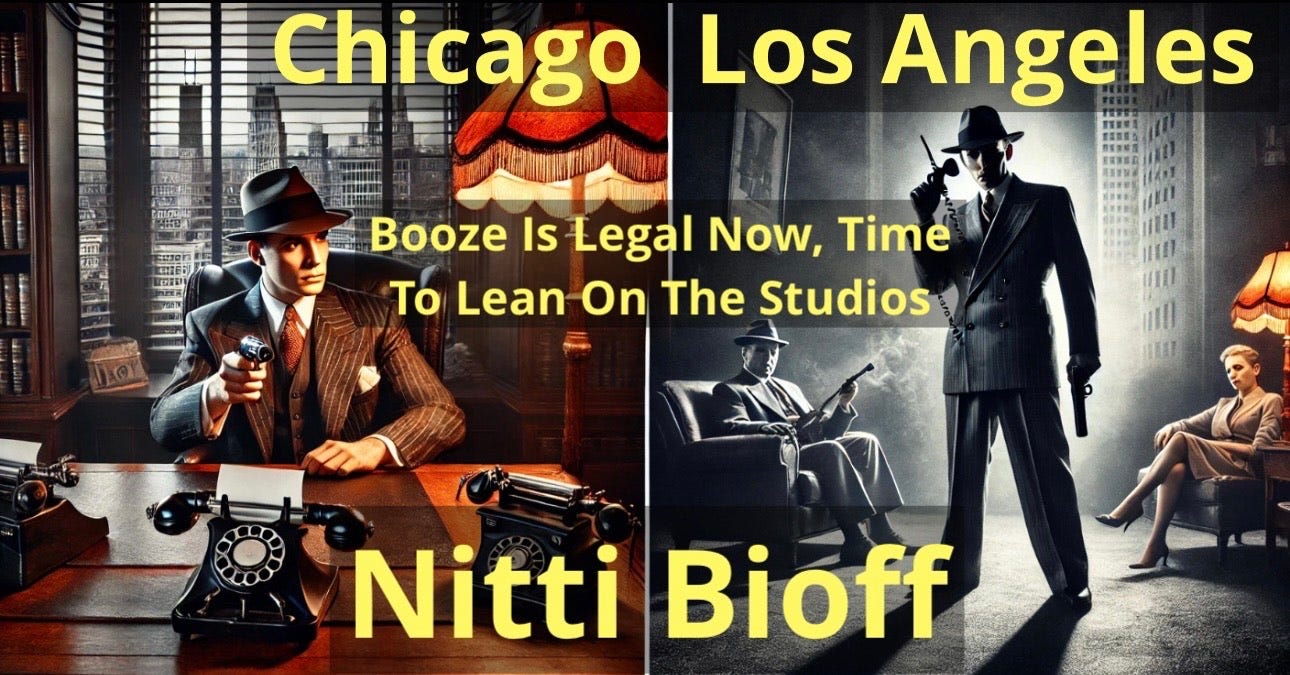
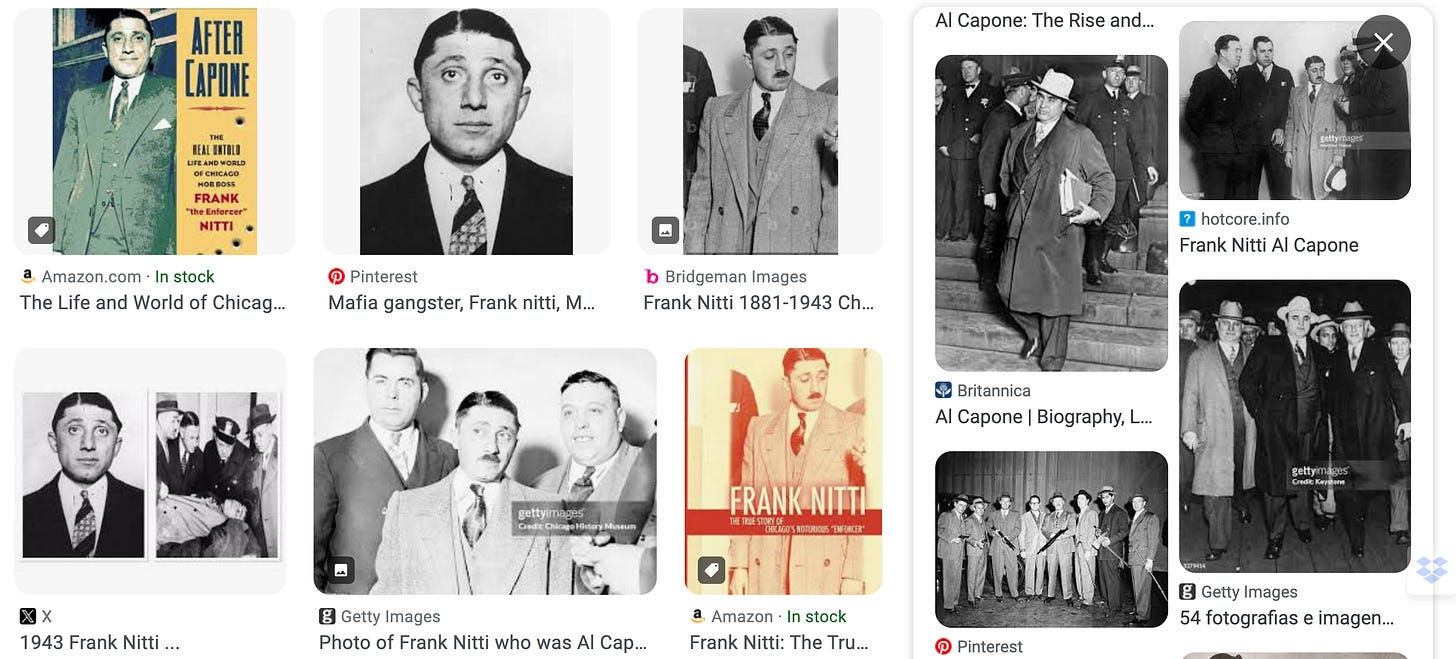

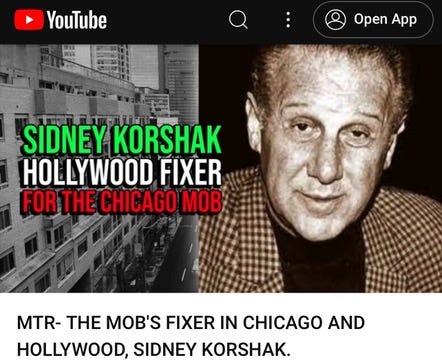

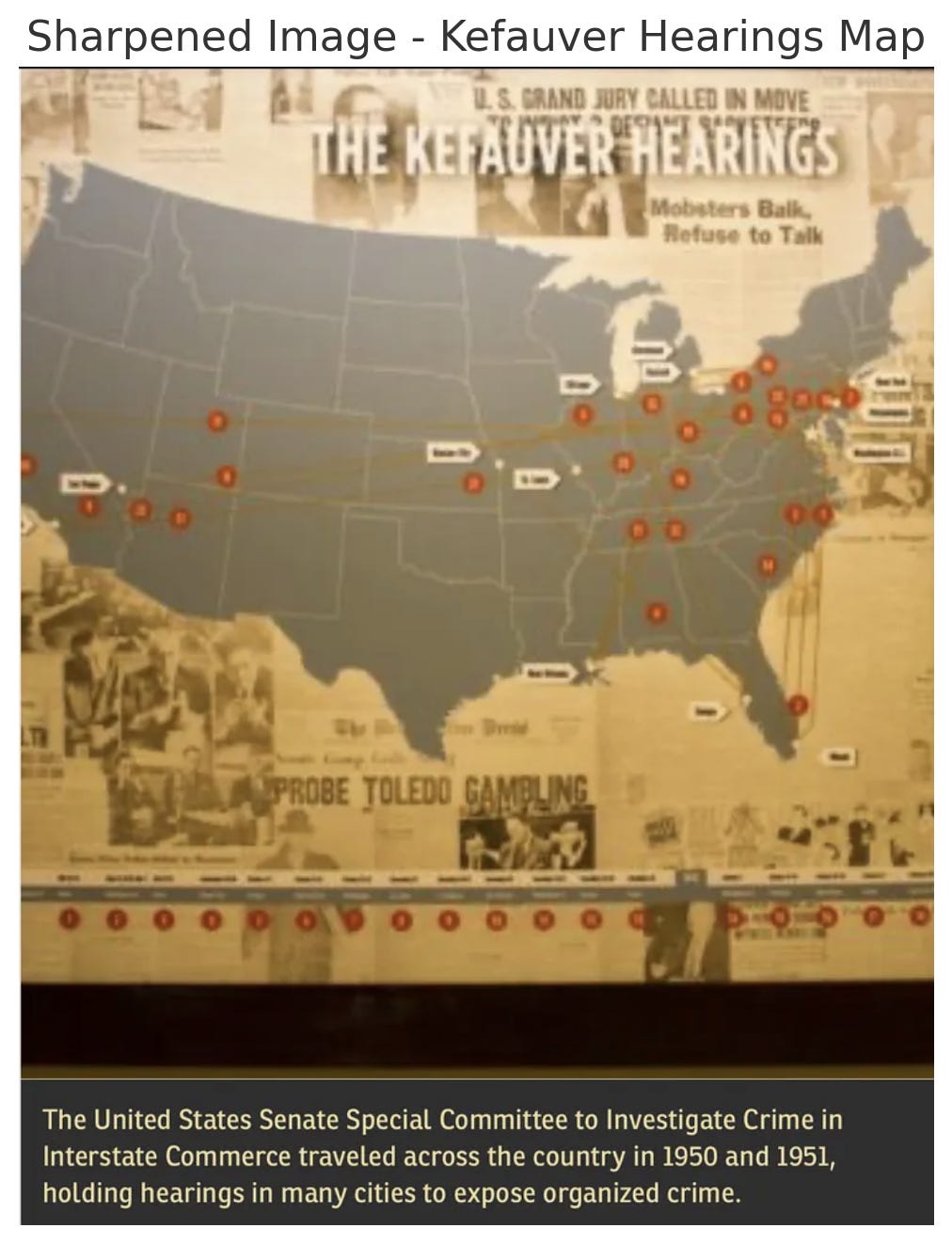









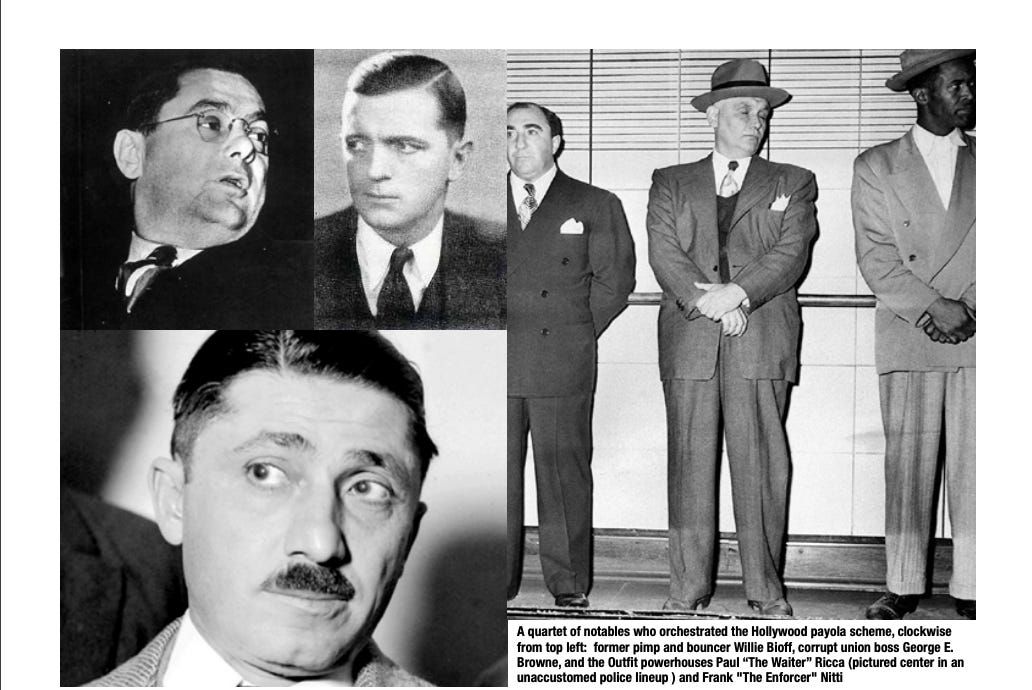



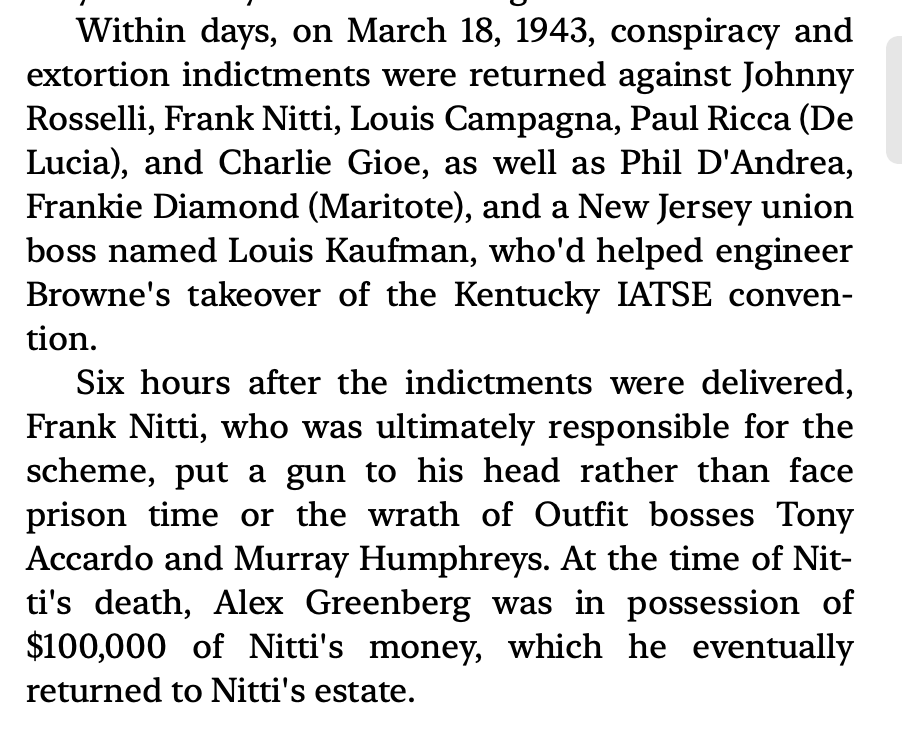


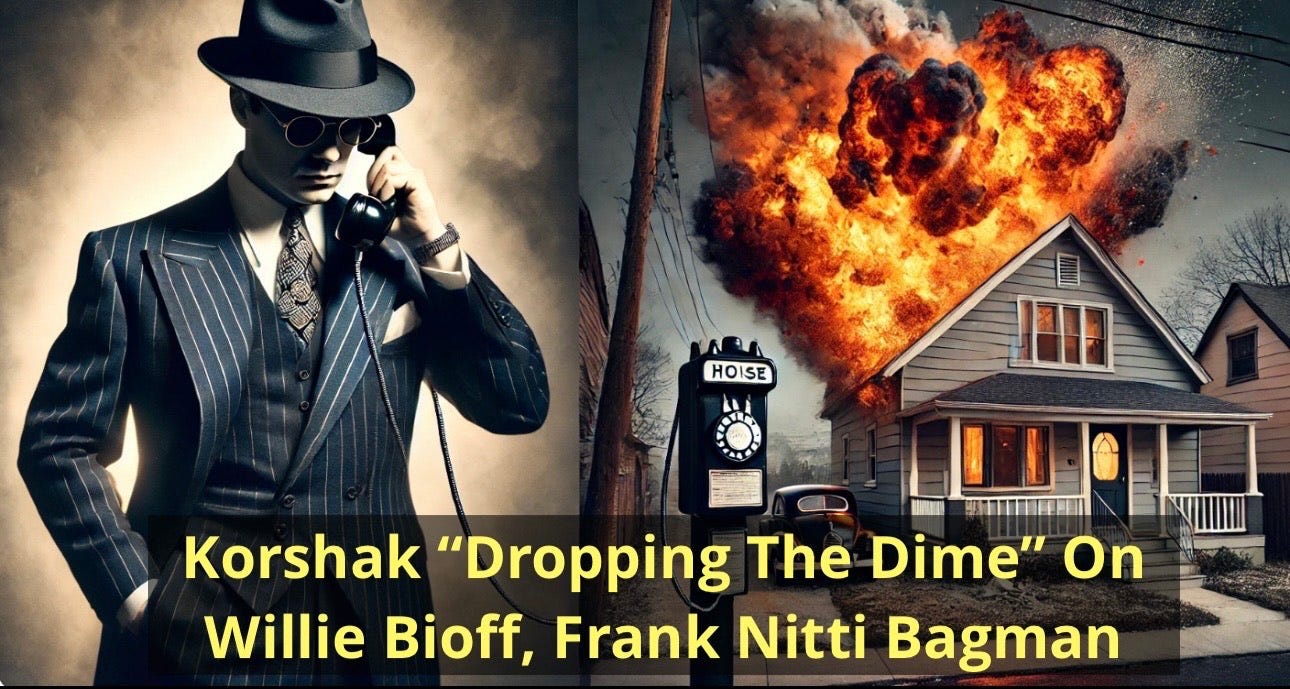


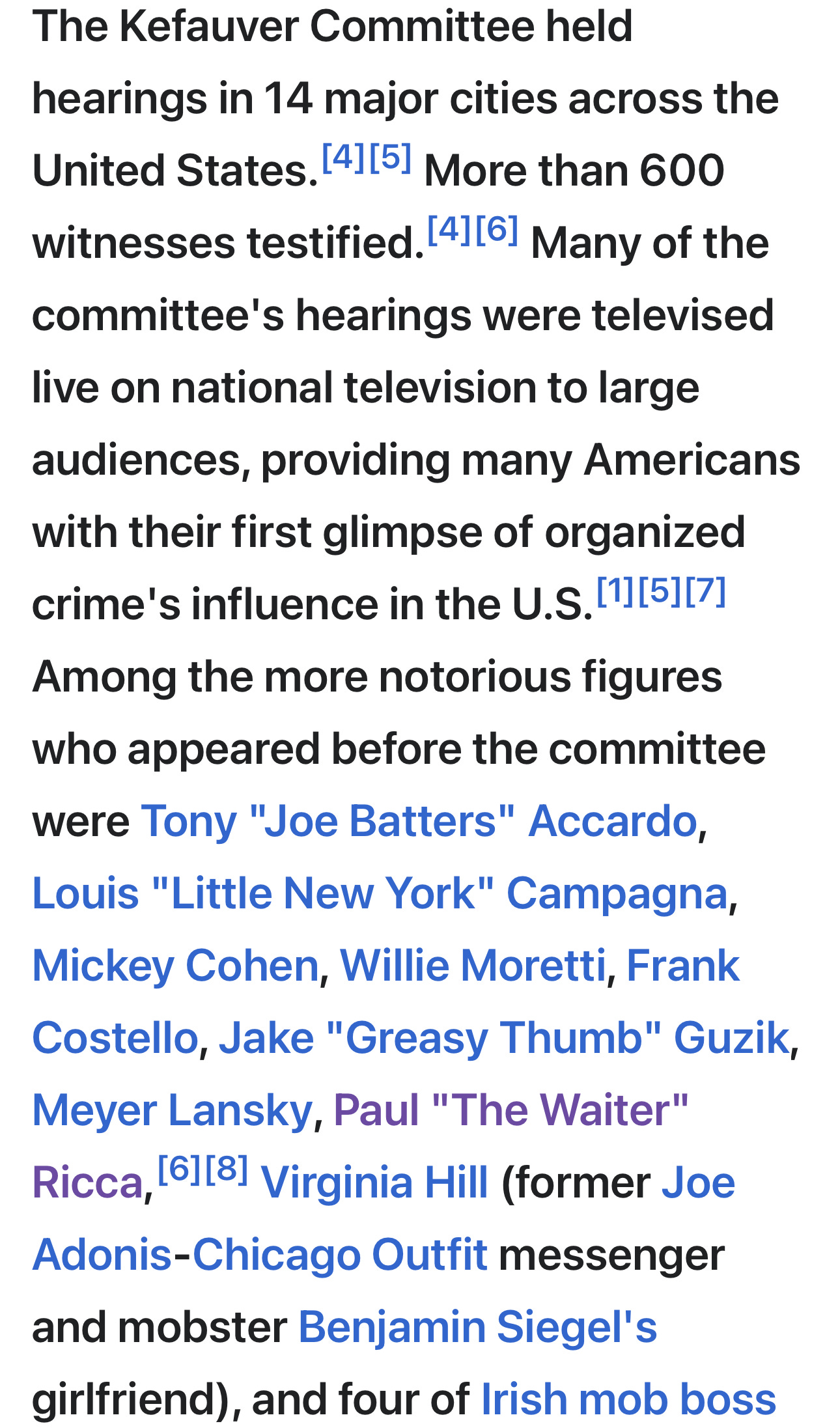
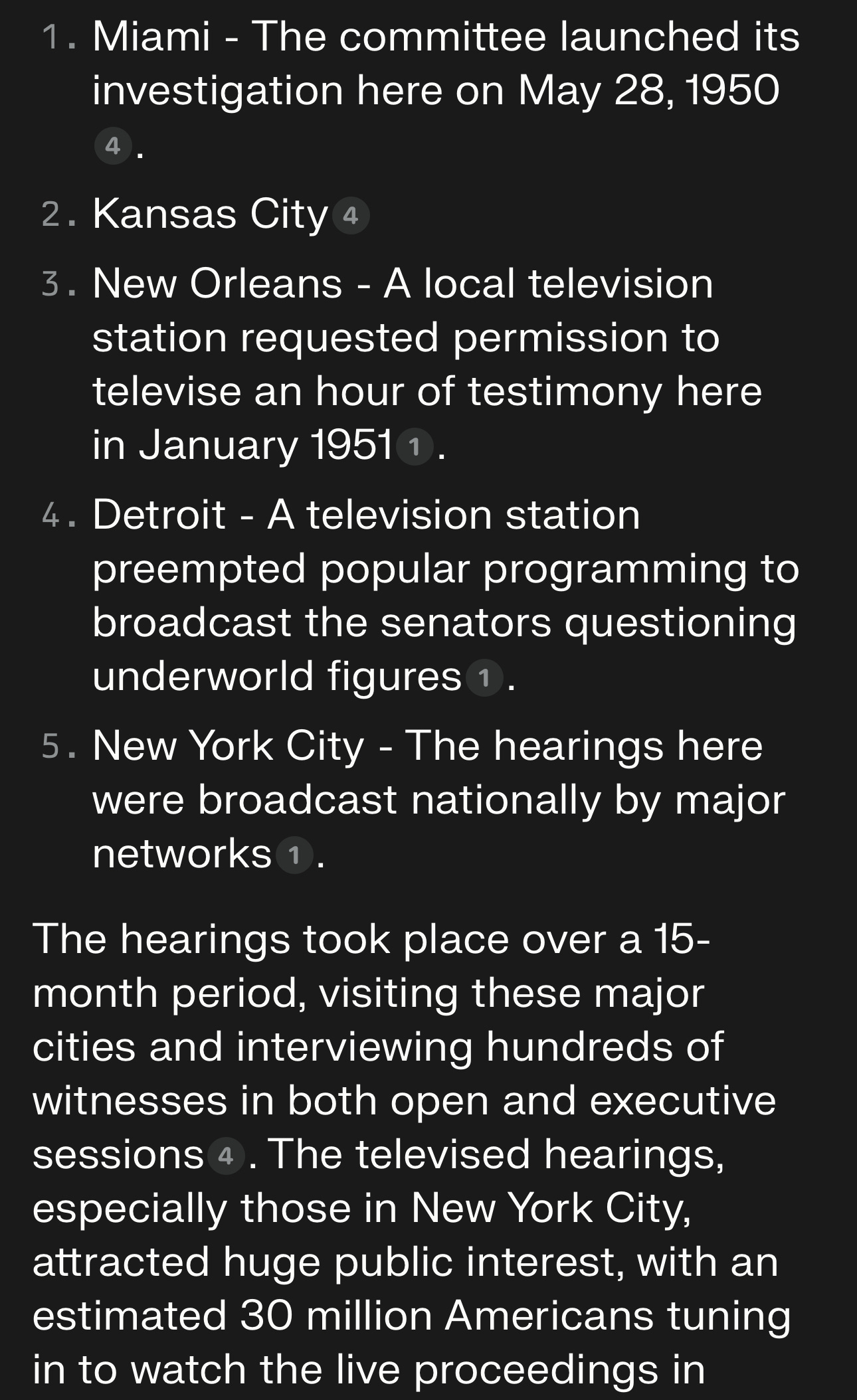

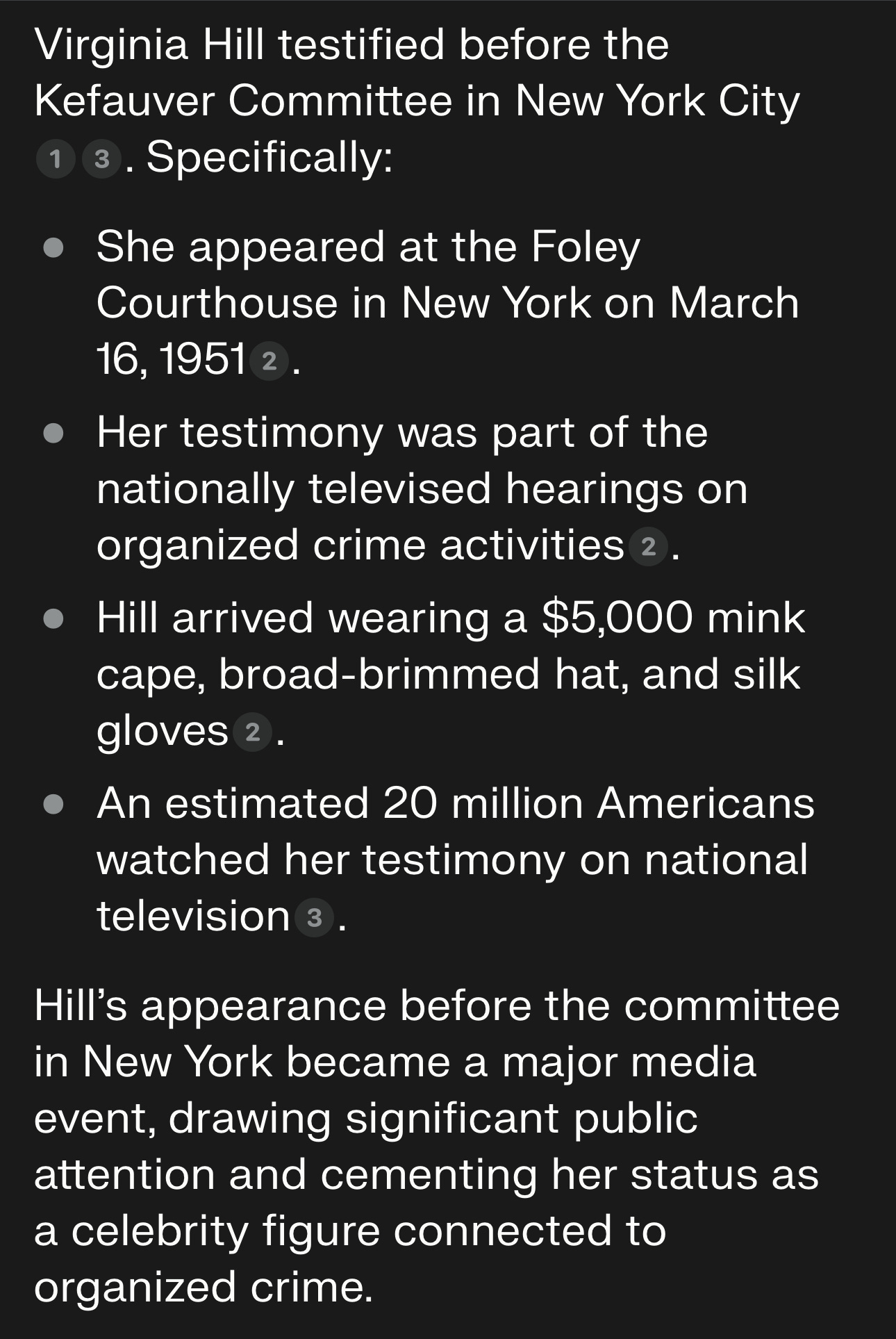
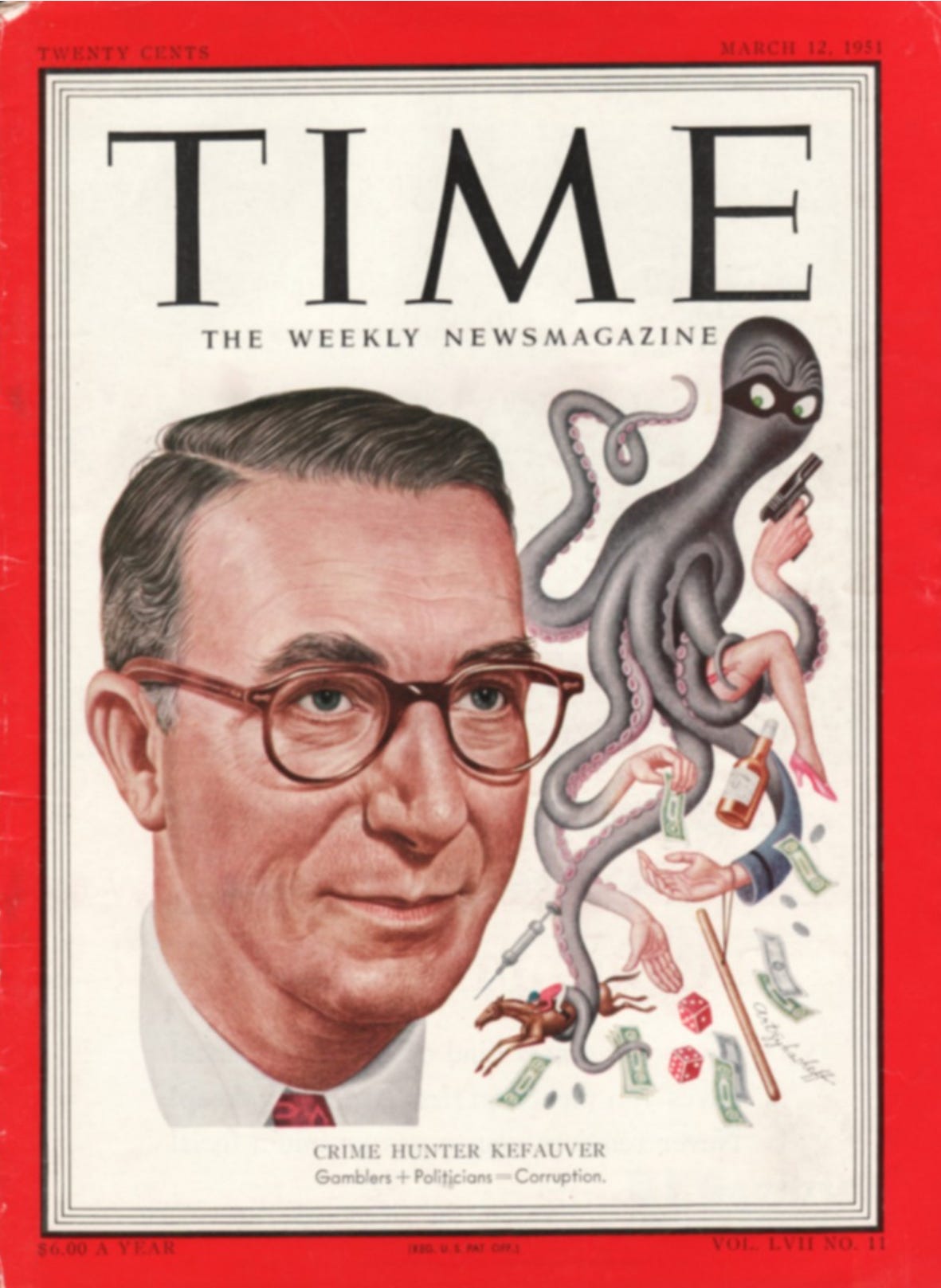

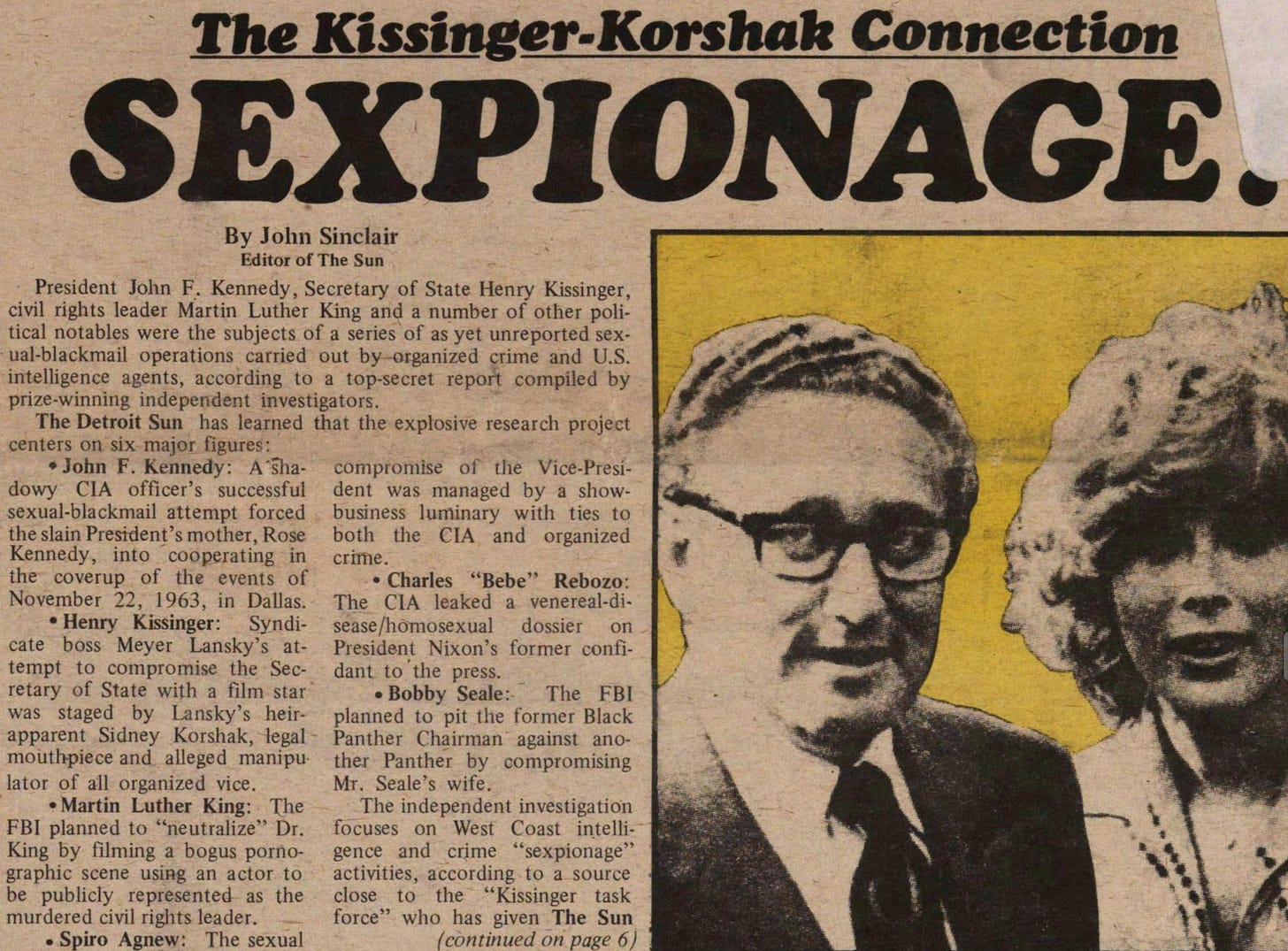
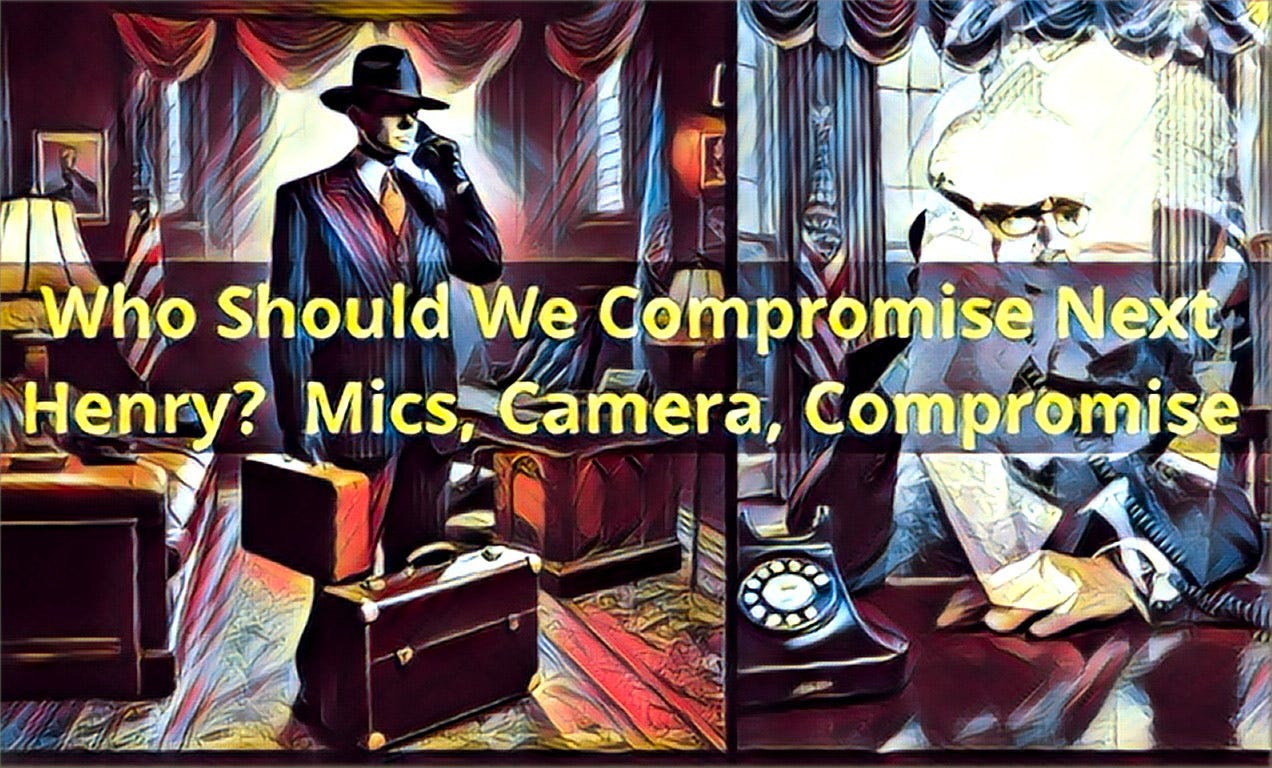





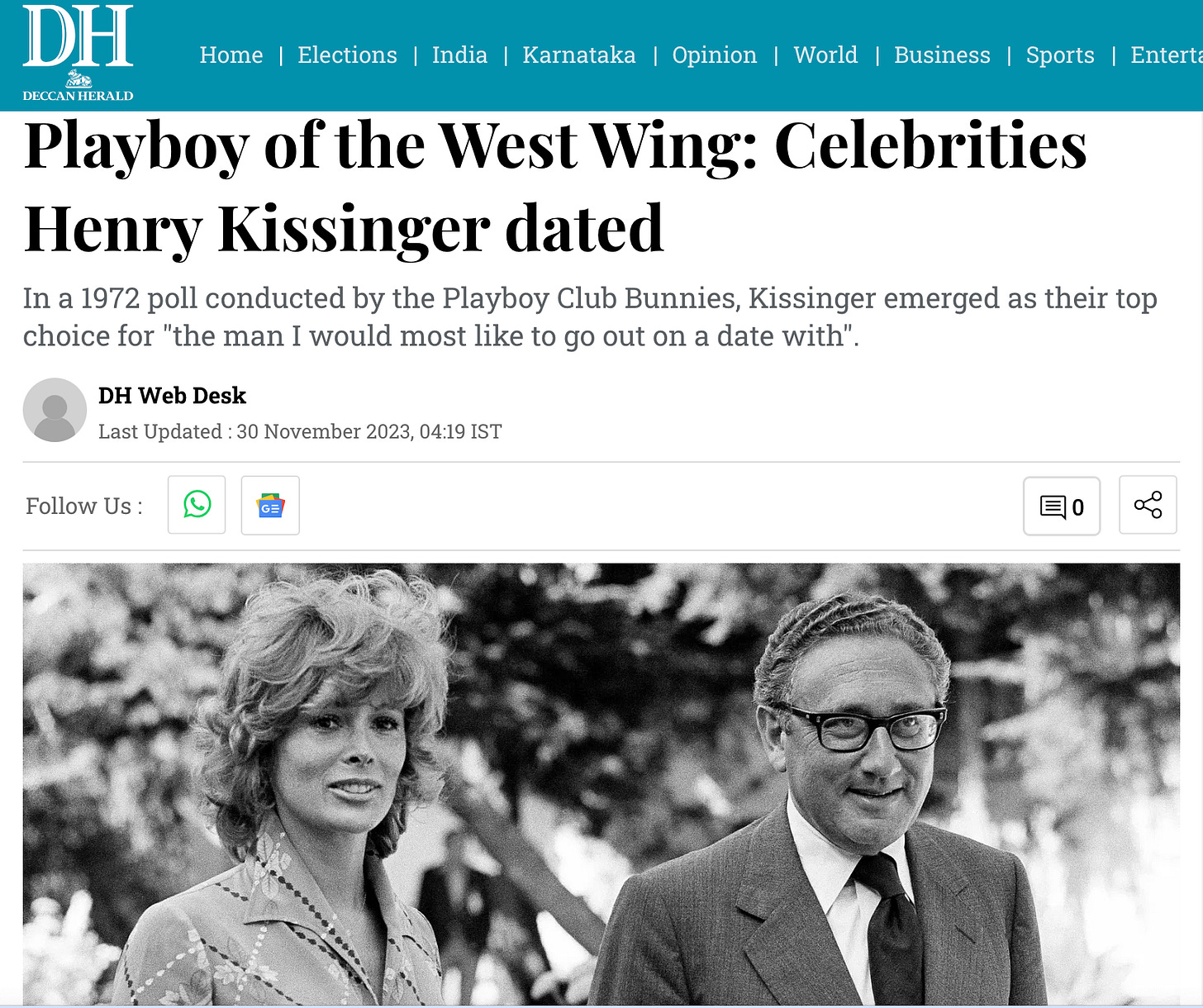




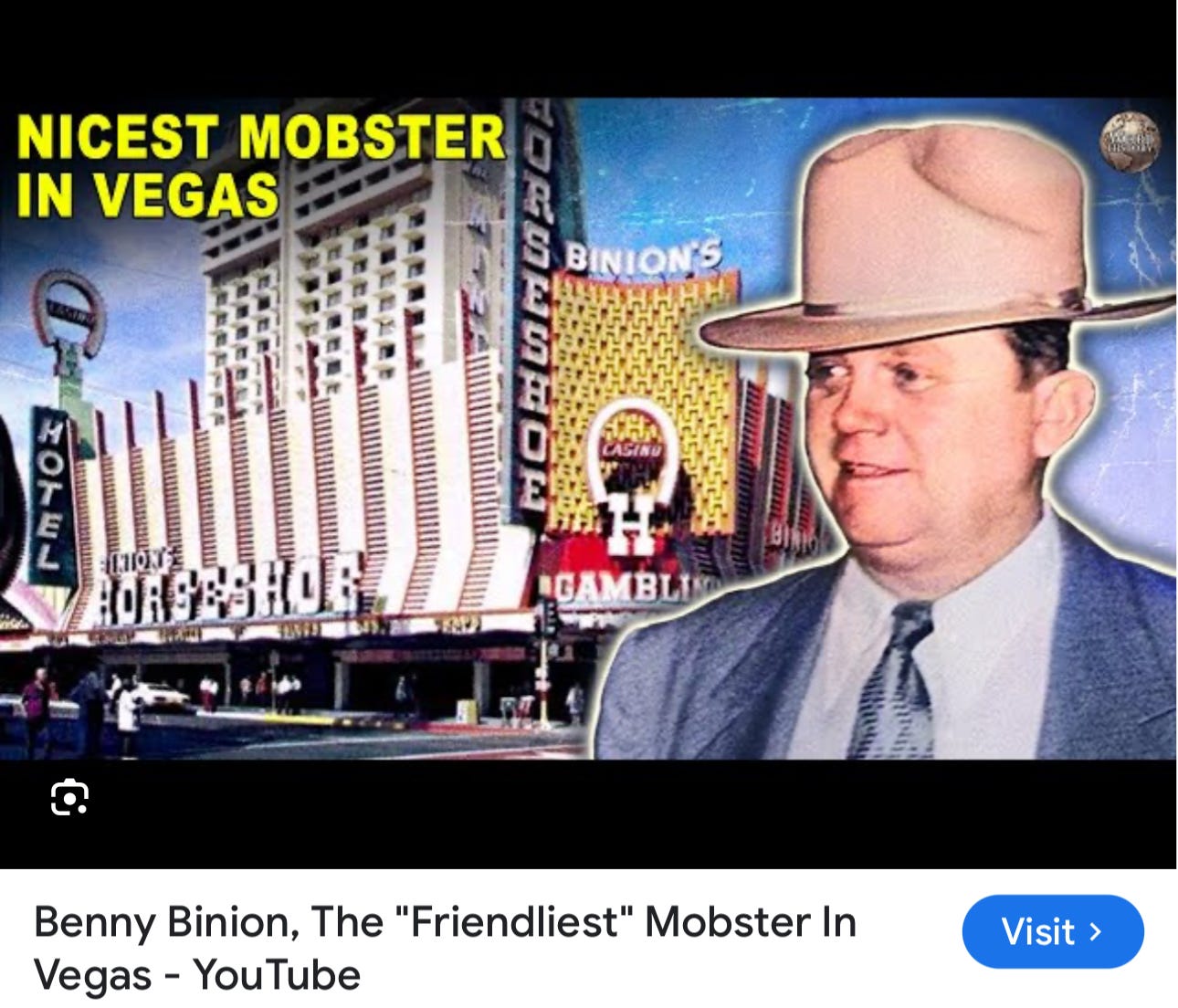



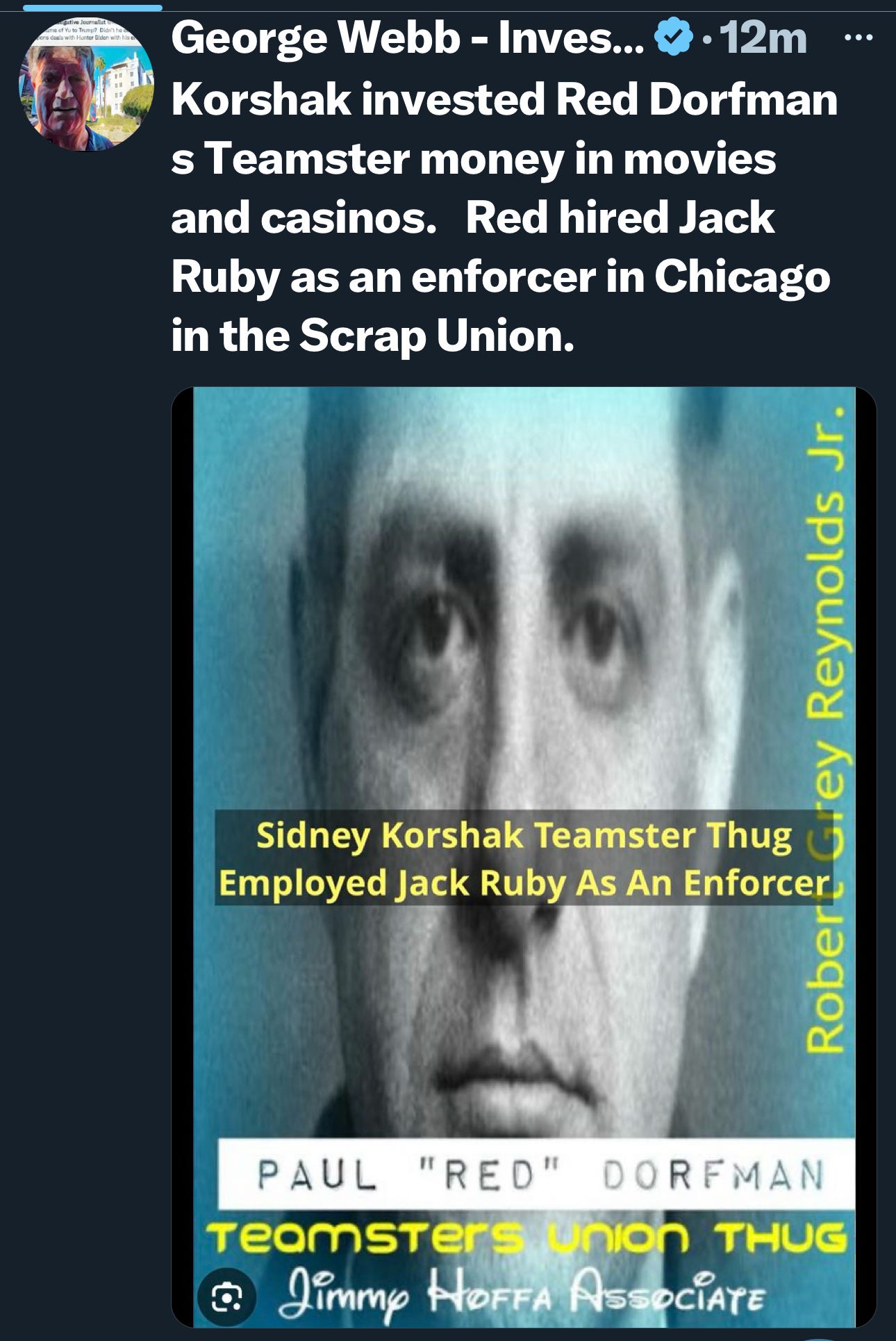
here is a comment from a longtime subscriber who wishes to remain anonymous.
Hi, George!
Your show with Peter yesterday was really amazing! Peter seemed to be so excited about the publishing of his new book, and you were there to support him every step of the way.
Looking back, George, as the days and years have gone by, you have always “been there” to help the people with whom you have been connecting. Your national and international audience members have been inspired as they have enjoyed seeing your very generous spirit in action, George. For just a few highlights:
You helped Jason to reach many more viewers on his channel as you invited your audience members to join you both on your very exciting adventures together.
You generously donated to Lee’s citizen journalism scholarship program, as you were spotlighting his academy.
You made a generous donation to help Robert David Steele.
You collaborated with Taskforce in your mutual investigations.
You helped John to establish his channel
You helped Mark to establish his channel
You helped the Neighborhood News Team to establish their organization.
You helped Addy to further his career and you helped him to increase his earnings.
You collaborated with Paul, you helped him to reach more viewers on his channel, and you helped him to navigate through his academic twists and turns.
You helped Tommy to reach more viewers on his channel.
You have made more appearances than any other guest on Jesse’s Missing Link show, and you have helped Jesse to reach more viewers on his channel.
You helped your friend to receive her transplant.
You have been helping
the Breggins and Dr. Ruby as they have had to endure the injustices of tactical lawfare.
You helped Karma Doc through a horrifically devastating time in her life, and you helped her to restore her family farm.
You are helping Veterans with therapy horses—including “Sterne the anthrax horse.”
You have been helping Peter to reach more viewers on his channel with your awesome 3 X per week show.
And yesterday you helped Peter to introduce his first book. It was really great fun for your audience members to watch yesterday’s show, George, and to share in all of the excitement going on there!
Rock on, George!
You’re The Greatest!
God bless you!
You might want to look at Dan Moldea’s MCA, Ronald Reagan and the Mob. His book on the NFL is terrific as well.